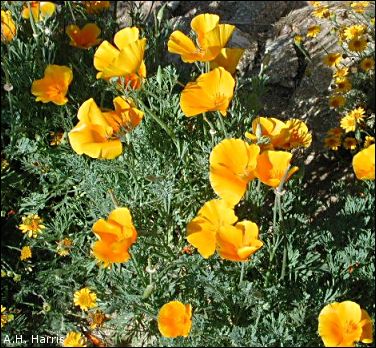

Evolution often produces multiple pathways to survival. Among plants, there are three primary chronological approaches to reproduction: thus the description of plants as annuals, biennials, or perennials.
Annuals are plants like our Mexican Poppies or Tumbleweeds; plants that sprout, grow up, reproduce, and die all in 1 year. This is a somewhat risky strategy in that a bad year may mean no reproduction at all for that year. This danger is met by most, however, by some of their seeds lying dormant, germinating only in a good year.
Biennials spend their first year storing up food instead of flowering and use that stored energy for reproduction during their second year. Hooker's Evening Primrose does this, though under some conditions it cheats and becomes a perennial.
Perennials often take several years to begin flowering but then continue to reproduce each year until overcome by old age or disease. Most of our shrubs and trees, such as Honey Mesquite and Desert Willow, and many grasses and forbs are perennials.
Different ways of doing things, but who can argue with success?

Contributor: Arthur H. Harris, Laboratory for Environmental Biology, Centennial Museum, University of Texas at El Paso.
Desert Diary is a joint production of the Centennial Museum and KTEP National Public Radio at the University of Texas at El Paso.

Mexican Poppies are annuals that, in a good year, turn the lower slopes of the Franklin Mountains into a golden haze. Photograph by A.H. Harris.
Web ResourcesThe Centennial Museum's virtual exhibit of the Franklin Mountains' Mexican Poppies.